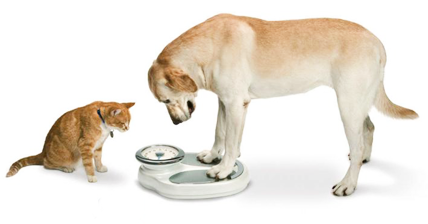

With cat breeds we tend to see breeds such as Persians or British short-haired that are more prone to becoming overweight – although there is not as much research available to confirm exactly why this is. In a domestic environment, this balance obviously isn’t desired or required, but the metabolisms of the dogs remain the same. Many of these dogs have been bred over time to be working dogs, when they were required to be as active as possible on as little food as possible. Studies at the RVC have shown that dog breeds including pugs, beagles, border terriers, golden and Labrador retrievers, and springer, cocker and cavalier King Charles spaniels, are particularly prone to becoming overweight. Sexįemale dogs can often be more prone to becoming overweight and on average male neutered cats tend to be more overweight. As dogs age they become less active, and if their food isn’t reduced proportionally they can start to become overweight. Quick hits: The factors involved in your pet’s weight AgeĬlassically between two and 10 years, cats are most likely to be overweight as in this life stage they require less energy. So quite apart from the illnesses that are directly caused or exacerbated by being overweight, we can see that beneath the bonnet excess tissue is having a profound effect on the way our pets’ bodies are functioning.ĭownload our leaflet on the science of weight management >
#PET WEIGHT FULL#
Obviously from that point a vicious cycle is started, with more food being consumed, more fat being stored, more inflammation, more leptin being released and the ability to feel full being further reduced. What happens is that the body over-releases leptin, until eventually the body stops responding to it – and so the ability to understand when enough food has been consumed is reduced. That then has knock-on effects to the rest of the body, including changing how hormones are released, including the hormone leptin, which tells us how full we are. Most of us understand what acute inflammation is: you fall over and hurt something, and your body releases acute inflammation which rushes into where you’ve been hurt and provides healing qualities, before subsiding.Ĭhronic inflammation is more like a long-term, low-grade disrupter to the body, almost acting as a consistent fire that the body has to continuously fight over time. Actually, as research has continued, we have found that excess fat is metabolically active and has inflammatory qualities – leading to chronic inflammation. Until fairly recently there was a feeling that having excess tissue was benign and inert, acting as an energy store and an insulator for the body. When talking to clients we like them to be aware that there has been a change in the science around obesity in pets. While we haven’t done the exact maths of drawing together those studies, as a rule of thumb findings show that one in three cats and one in four dogs are overweight. We frequently see pets suffering from being overweight in practice, and various studies show that this is consistent with wider society. Because of the variance of needs at different stages of their lives, it is crucial that we understand diet and exercise requirements, and give our pets the lifestyle they need to live long, happy and healthy lives. So it goes without saying that prevention of obesity and hitting a good, healthy weight for your pet can in itself prevent a whole range of maladies. As well as this, by carrying more weight a pet is more prone to injuring themselves and suffering from mobility issues. However, if weight gain does occur, it can lead to diabetes, arthritis, incontinence, high blood pressure, heart disease – a huge list of diseases and symptoms. It happens that owners don’t notice changes until it becomes very obvious and starts to have implications on their pet’s lifestyle. Sometimes it can be easy as an owner to get caught out, not knowing at what stages those requirements may alter.Īnd we all know how hard it is to spot whether our pet has gained or lost weight when we see them every day. In particular, their energy requirements and nutritional needs will change as they age. But while the issue is always there, the factors behind it vary throughout a pet’s life. Weight is an important factor in pet health throughout their lives, regardless of their species or circumstance.


 0 kommentar(er)
0 kommentar(er)
